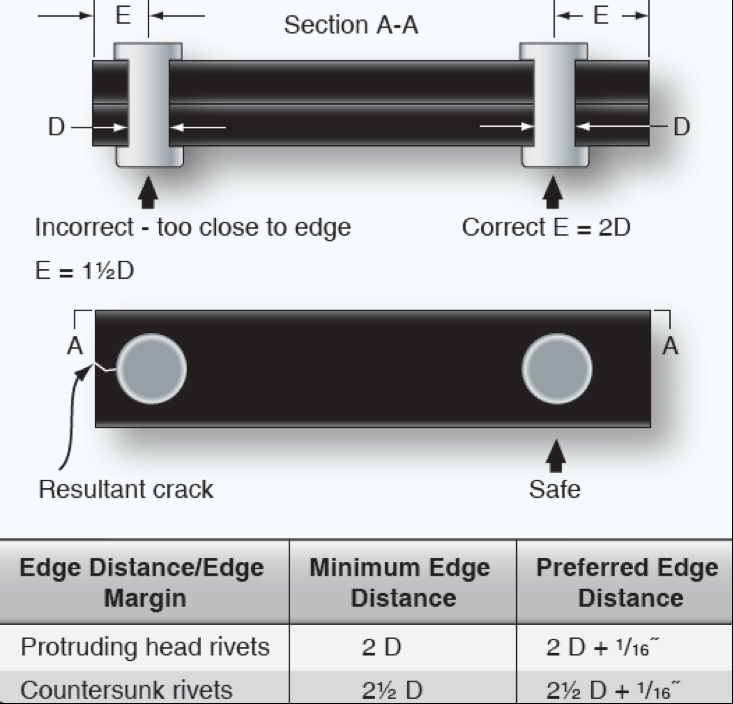Rivet Edge Distance

Common Question
Another common question about Rivet Edge Distance from our students is, “How far away should the rivets be from the edges of the metal?” Again, the FAA only specifies the minimum rather than the maximum. One safe fallback is that OEM instructions, such as an SRM, always take precedence over FAA instructions. So, if you have OEM guidance then follow that. Also, if you work for a Part 121 Operator and your Engineering Department has provided instructions, then those take precedence over FAA and OEM guidance. I should mention that there are also other approved instructions such as those included in a Supplemental Type Certificate (STC).
The general practice is to duplicate what the manufacturer used in the area surrounding the repair. Aside from this, there are no set rules that govern the spacing of rivets in all cases. It is measured from the center of the first rivet to the edge of the sheet. It should not be less than 2 or more than 4 diameters and about 2.5 is recommended.
The minimum edge distance for universal rivets is 2 times the diameter of the rivet; the minimum edge distance for countersunk rivets is 2.5 times the diameter. If rivets are placed too close to the edge the sheet may crack. If they are spaced too far the sheet is likely to turn up at the edges.
It is good practice to lay out the rivets a little further from the edge so that the rivet holes can be oversized without violating the edge distance minimums. Add 1⁄16-inch to the minimum edge distance or determine the edge distance using the next size of rivet diameter. If you set the holes at minimums and mess up drilling out a rivet and elongate the hole you will find your repair to be beyond minimums when you try to go up to the next size rivet.
